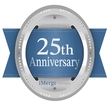What Measures Are in Place to Ensure Data Security and Privacy?
For SaaS CEOs, data security and privacy are no longer just IT concerns—they’re boardroom imperatives. A single breach can erode customer trust, trigger regulatory penalties, and slash valuation multiples. As Jason Lemkin, founder of SaaStr, puts it: “Security is now a core feature, not a back-office function.”
Whether you’re scaling toward a $50M ARR milestone or preparing for a strategic exit, your security posture directly impacts customer retention, enterprise sales velocity, and M&A viability. In this article, we’ll explore the most effective, research-backed measures SaaS companies are implementing to ensure data security and privacy—drawing from elite MBA frameworks, industry leaders, and M&A best practices.
1. Embedding Security into the Product Lifecycle
Shift Left: Secure by Design
Stanford’s Lean Product Playbook emphasizes integrating security early in the development cycle. This “shift left” approach reduces vulnerabilities and technical debt. Leading SaaS firms now embed security into DevOps pipelines using tools like Snyk or GitHub Advanced Security to scan code in real time.
- Actionable KPI: Track “mean time to remediate” (MTTR) for vulnerabilities—top quartile SaaS firms resolve critical issues in under 7 days (per McKinsey).
- Tool Tip: Implement threat modeling during sprint planning to anticipate attack vectors before code is written.
Zero Trust Architecture
Google’s BeyondCorp model, now widely adopted, assumes no implicit trust—even inside your network. SaaS companies are moving toward identity-based access controls, micro-segmentation, and continuous authentication.
- Actionable KPI: Monitor “privileged access audit frequency” and “inactive user deprovisioning time.”
- Emerging Tech: Use AI-driven behavioral analytics to detect anomalous access patterns.
2. Compliance as a Strategic Asset
Certifications That Build Trust
According to SaaS Capital’s 2023 survey, 68% of enterprise buyers require SOC 2 Type II compliance before signing. GDPR, CCPA, and HIPAA are no longer optional—they’re table stakes. But beyond checkboxes, compliance can be a growth lever.
- Actionable KPI: Track “compliance coverage ratio”—the percentage of customer geographies covered by your data policies.
- Strategic Move: Use compliance readiness as a sales enablement tool. Firms like Box and Okta have turned their security posture into a competitive differentiator.
As explored in Due Diligence Checklist for Software (SaaS) Companies, acquirers will scrutinize your compliance documentation during M&A. Gaps in SOC 2, GDPR, or data retention policies can delay or derail deals.
3. Data Governance and Encryption Standards
Data Classification and Lifecycle Management
Wharton’s enterprise risk frameworks stress the importance of knowing what data you have, where it lives, and who can access it. Leading SaaS firms implement automated data classification tools and enforce retention policies aligned with legal and business needs.
- Actionable KPI: “Percentage of sensitive data with defined retention policies” should exceed 90%.
- Best Practice: Use data loss prevention (DLP) tools to monitor and block unauthorized data transfers.
Encryption in Transit and at Rest
End-to-end encryption is now standard. But elite SaaS firms go further—using customer-managed keys (CMKs) and hardware security modules (HSMs) to give clients control over their data.
- Actionable KPI: “Encryption coverage ratio”—the percentage of data encrypted using industry-standard protocols (e.g., AES-256).
- Investor Signal: Strong encryption practices can boost valuation multiples, especially in regulated verticals like fintech or healthtech.
4. Incident Response and Business Continuity
Proactive Breach Readiness
According to Harvard Business School’s case study on Equifax, the costliest breaches often stem from delayed detection and poor communication. SaaS leaders now simulate breach scenarios quarterly and maintain 24/7 security operations centers (SOCs).
- Actionable KPI: “Mean time to detect” (MTTD) and “mean time to contain” (MTTC) are critical metrics. Best-in-class firms aim for MTTD under 24 hours.
- Board-Level Metric: Track “incident response plan test frequency” and ensure executive participation.
Resilience and Redundancy
Cloud-native SaaS companies are adopting multi-region failover strategies and immutable backups. This ensures uptime and data integrity even during ransomware attacks or cloud outages.
- Actionable KPI: “Recovery time objective” (RTO) and “recovery point objective” (RPO) should align with customer SLAs.
- Investor Lens: Resilience planning is a key due diligence item in M&A, as noted in Completing Due Diligence Before the LOI.
5. Privacy-First Culture and Employee Training
Human Risk is Still the Biggest Risk
Per a 2023 PwC report, over 80% of breaches involve human error. SaaS companies are investing in continuous security awareness training, phishing simulations, and role-based access controls.
- Actionable KPI: “Phishing simulation failure rate” should trend below 5% over time.
- Culture Metric: Track “security training completion rate” across departments, not just engineering.
Privacy by Default
Following GDPR’s lead, many SaaS firms are adopting “privacy by design” principles—minimizing data collection, anonymizing user data, and offering granular consent options.
- Actionable KPI: “Percentage of features with privacy impact assessments (PIAs)”—a key metric for product teams.
- Customer Trust Signal: Publicly share your privacy practices and breach notification protocols.
6. Security as a Value Driver in M&A
Security isn’t just about risk mitigation—it’s a valuation lever. According to PitchBook, SaaS companies with strong security postures command 15–20% higher acquisition multiples. Why? Because acquirers want clean, compliant, and resilient platforms.
Advisors like iMerge use proprietary frameworks to assess security maturity during pre-LOI diligence. As outlined in Exit Business Planning Strategy, preparing your security documentation—SOC 2 reports, penetration test results, and data maps—can accelerate deal timelines and reduce escrow holdbacks.
Conclusion: Security is Strategy
For SaaS CEOs, data security and privacy are no longer just technical checkboxes—they’re strategic differentiators. From innovation KPIs to acquisition readiness, your security posture shapes everything from customer trust to exit valuation.
By embedding security into your product lifecycle, aligning with global compliance standards, and fostering a privacy-first culture, you not only protect your business—you increase its enterprise value.
Scaling fast or planning an exit? iMerge’s SaaS expertise can guide your next move—reach out today.



